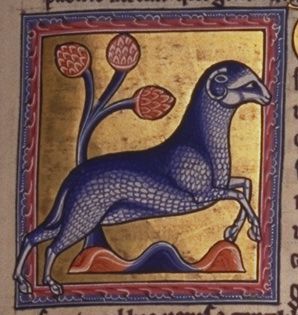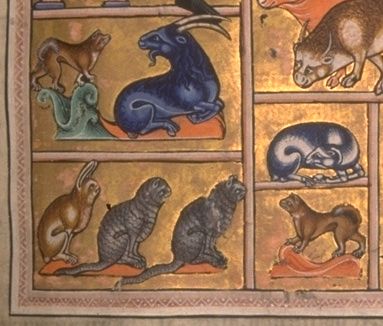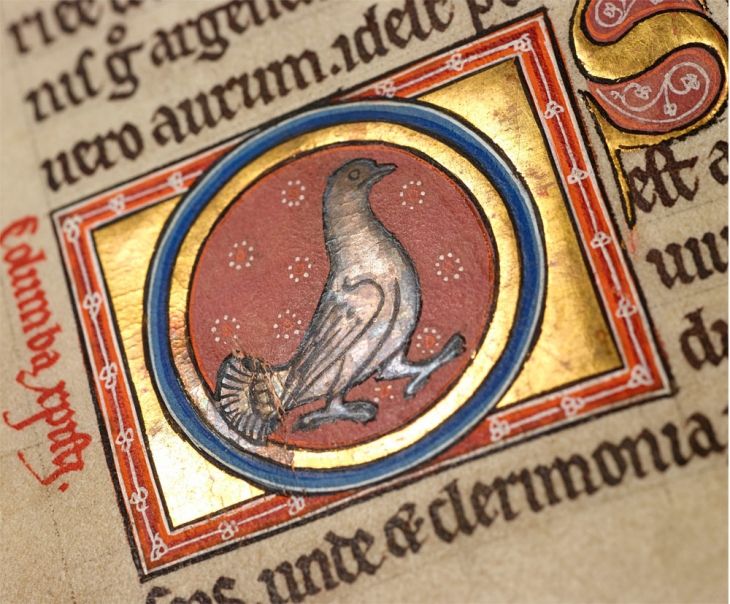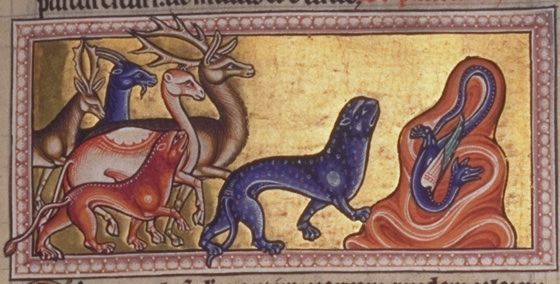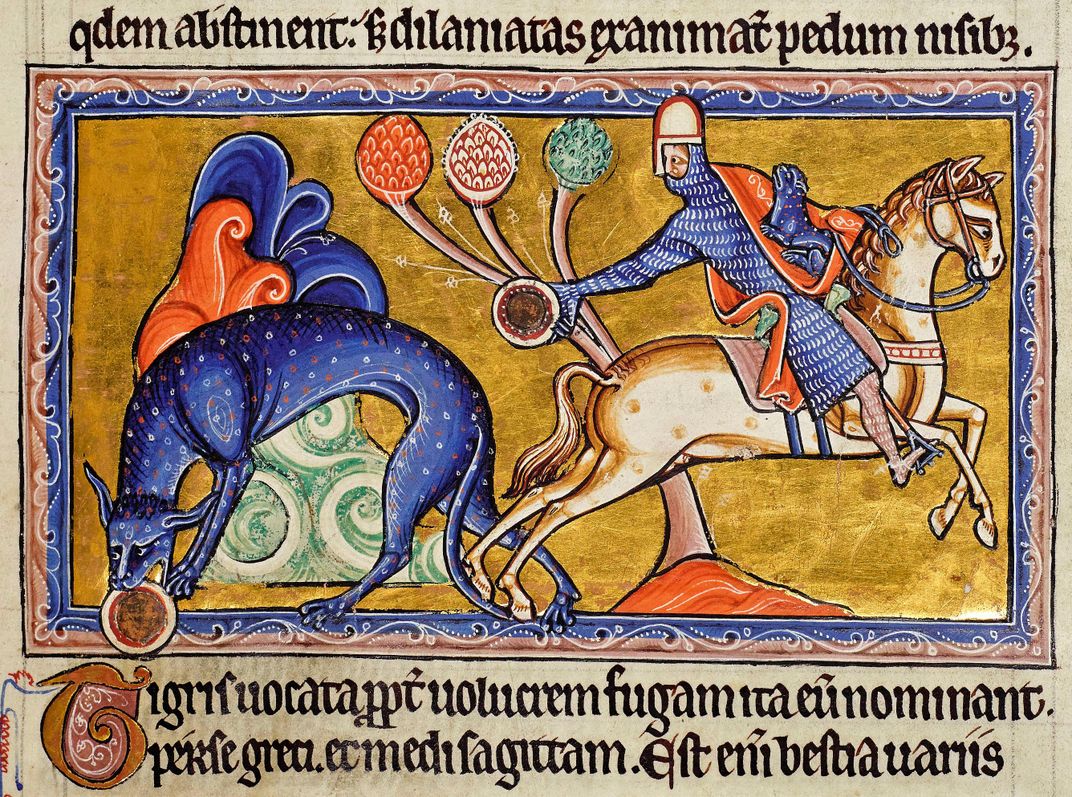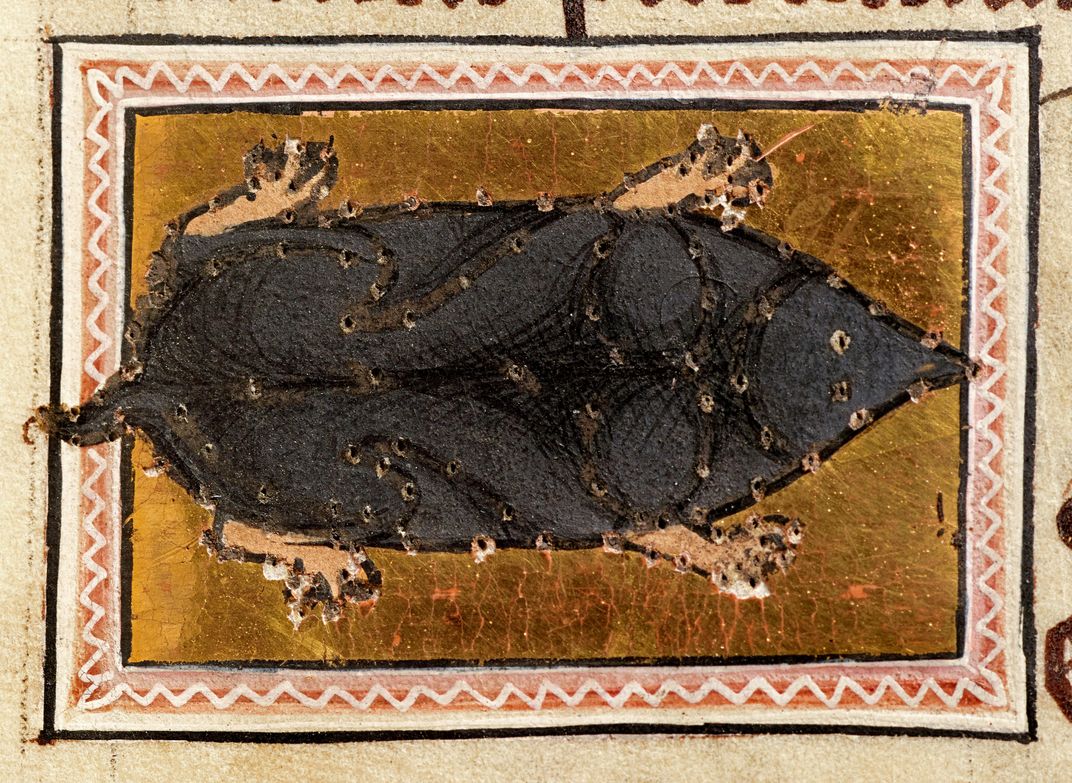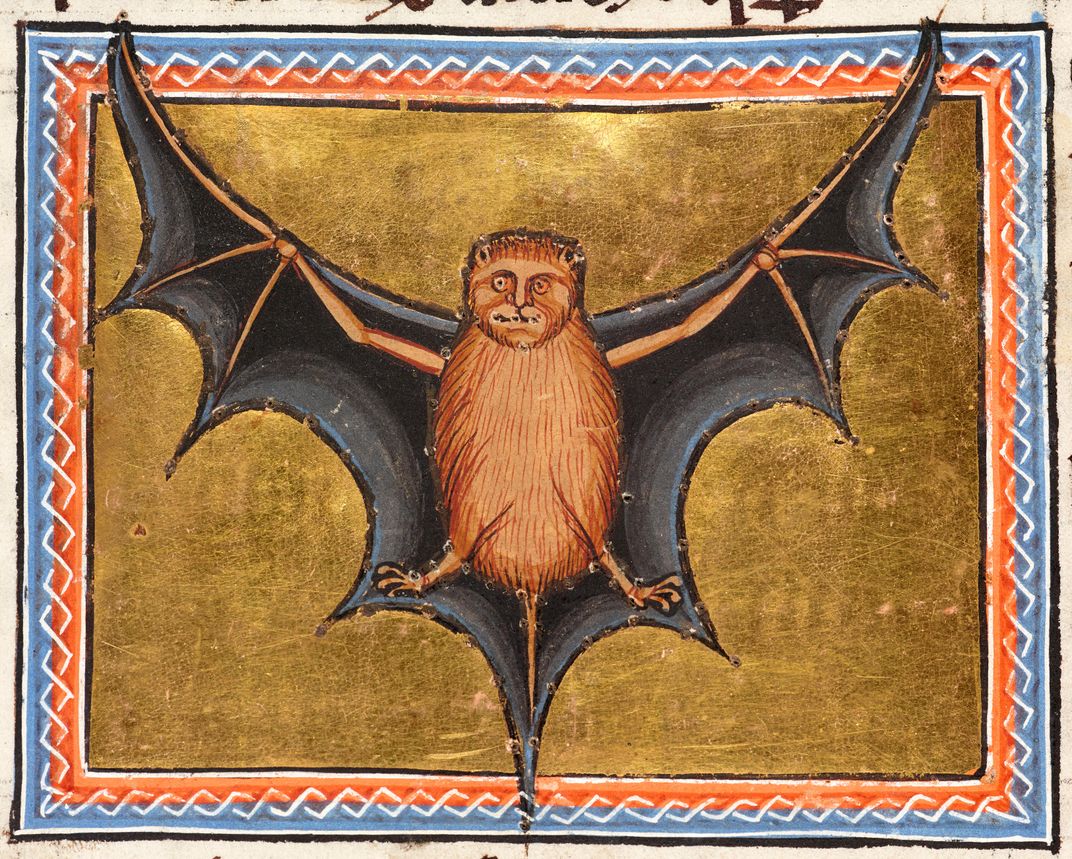Hi-Res Photography Reveals New Details of the Centuries Old Aberdeen Bestiary
Fingerprints, wear marks and other details show the beautiful manuscript was once a teaching tool, not a royal collectible
The Aberdeen Bestiary was first documented in 1542 as part of Henry VIII’s book collection. The manuscript with its elaborate, gilded illustrations of animals seems like the type of precious object that belongs in a royal collection. But according to a press release, new high resolution photography of the book, which was probably created around 1200, reveals that before it came into the king’s possession it was likely a teaching tool, and was thumbed through by generations of monks and pupils.
The manuscript’s website writes that last year, the University of Aberdeen, which has held the manuscript in its library for almost 400 years, contracted with the University of Manchester Library’s Centre for Heritage Imaging and Collection Care to come and take high resolution images of the fragile manuscript. Using a medium format camera and special ultraviolet-filtered LED lights, the team snapped 345 images of the manuscript pages, including close ups of the illustrations and anomalies on the pages.
The 80-million megapixel images showed some marks not visible with the naked eye, and indicated that the book was indeed an active textbook and not a royal commission. On many of the words there are tiny marks which would have helped a reader with pronunciation, which means that at some point the book was read aloud. The pages also show stress marks from repeated turning, as well as small marks in the margin and pin holes from people copying the illustrations, all indications that the book was actively used and not a royal collector’s item.
“We’ve also been able to see for the first time that most pages have dirty finger marks in the bottom corner, from turning the folio. But at least one has repeated dirty thumb marks in the centre of the top margin, created by turning the book around for public viewing,” Jane Geddes, an art historian at the University of Aberdeen, says in the press release.
“This all suggests that it was a book created for the enjoyment of many rather than to be held as a private treasure for the wealthy elite, meaning that it was most likely seized by Henry VIII during the dissolution of the monasteries rather than created for one of his ancestors,” she says.
In fact, the Herald Scotland reports that the text of the manuscript is essentially a teaching aid. In the book, Adam names all the animals, then those animals are used in following chapters as the basis of religious and morality tales, the type of stories used to teach budding theologians.
The new photos are included on the Bestiary’s updated website, which allows users to zoom in on the text and images and examine the fine details of how the manuscript was created. Siobhán Convery, Head of Special Collections at the University, says the new site means the 800-year-old book has come full circle, from teaching monks to teaching the whole world through its digital incarnation.
